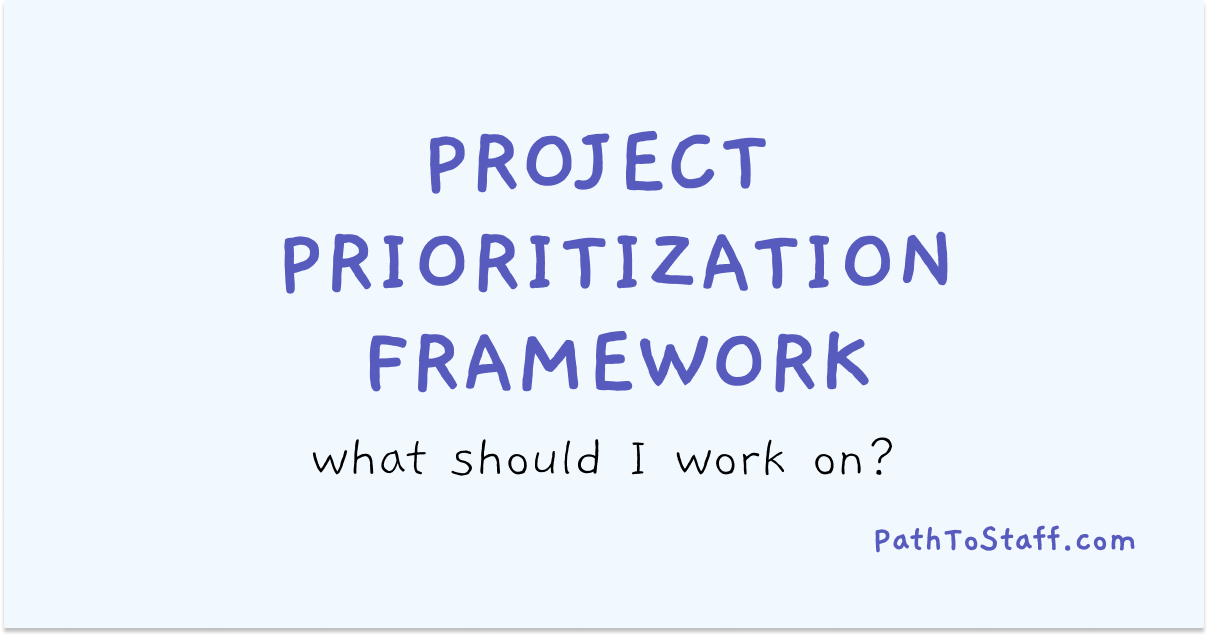Project Prioritization Framework (What Should I Work On?)
A simple yet useful framework to rank projects
Welcome back to Path to Staff! We are now a 4000+ strong community. A special welcome to the 1100+ new readers since our last article on how work-life balance slows / accelerates careers.
Today, I’ll share more about my framework for prioritizing projects. Prioritizing your work is a skill that becomes increasingly important as you advance in a company.
Why? Knowing how to prioritize means:
You don't have to lean on your manager as much, which builds greater trust between you and them.
As you get more senior and lead large teams and organizations, you need to figure out what to work on. Other engineers depend on the output of your work.
You get to have fun while doing so. Being in control of your priorities means you're in control of your destiny. Besides, who likes being told what to do?
Marrying needs & fun
You need two things to prioritize your work:
A good understanding of your company
A…



